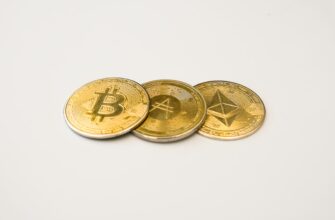## Introduction
As cryptocurrencies reshape global finance, Tether (USDT) has emerged as a pivotal stablecoin bridging traditional banking and digital assets. For United States banks, understanding USDT price dynamics isn’t just academic—it’s becoming essential for risk management and strategic planning. This article explores how USDT pricing affects U.S. banking operations, regulatory challenges, and what the future holds for this $110+ billion asset.
## What is USDT and Why Its Price Matters to Banks
USDT (Tether) is a stablecoin pegged 1:1 to the U.S. dollar, designed to minimize volatility. While theoretically stable, its market price fluctuates due to supply-demand imbalances, regulatory news, or liquidity crises. For U.S. banks:
– **Balance Sheet Exposure**: Institutions holding USDT face valuation risks if the peg breaks
– **Transaction Services**: Banks facilitating USDT conversions must manage real-time arbitrage gaps
– **Client Demand**: Businesses using USDT for cross-border payments require predictable pricing
Even minor deviations (e.g., $0.995 vs. $1.005) can compound into millions in losses across large volumes.
## How U.S. Banks Influence and Monitor USDT Pricing
American financial institutions shape USDT markets through:
1. **Liquidity Provision**: Major banks like Signature (before closure) and Silvergate enabled real-time USD-USDT conversions, tightening price spreads
2. **Custody Services**: BNY Mellon and others safeguard reserves, impacting market confidence
3. **Regulatory Pressure**: Banking scrutiny of Tether’s reserves affects investor sentiment
4. **Fiat Gateways**: Bank-supported on/off ramps determine arbitrage efficiency, directly influencing USDT’s dollar peg stability.
## Key Factors Driving USDT Price Fluctuations
### Regulatory Actions
SEC lawsuits or state-level bans (like New York’s 2021 Tether settlement) trigger price dips. Conversely, clearer federal guidelines could stabilize valuations.
### Reserve Transparency
Doubts about Tether’s dollar reserves (e.g., commercial paper holdings) cause de-pegging events. Banks monitor attestation reports for risk assessment.
### Market Liquidity
During crypto sell-offs, USDT demand spikes, briefly pushing prices above $1. Banks manage this via redemption mechanisms.
### Banking Partnerships
When U.S. banks restrict crypto access (as with HSBC in 2023), conversion bottlenecks widen USDT price spreads.
## Risks and Opportunities for Banks
### Risks:
– **Regulatory Penalties**: Fines for non-compliance with BSA/AML rules during USDT transactions
– **Peg Instability**: Sudden devaluation during market stress events
– **Reputational Damage**: Association with Tether’s ongoing legal controversies
### Opportunities:
– **Fee Revenue**: Earning 0.1%-0.5% on institutional USDT-USD conversions
– **Client Retention**: Serving crypto-native businesses needing banking partners
– **Innovation Leadership**: Piloting blockchain-based settlement systems
## Future Outlook: Regulation and Banking Integration
The 2023 Lummis-Gillibrand bill proposes federal stablecoin oversight, potentially allowing FDIC-insured banks to issue stablecoins. Key developments:
– **Federal Framework**: Clear rules may let banks hold USDT reserves, reducing price volatility
– **CBDC Competition**: A digital dollar could challenge USDT’s dominance
– **Institutional Adoption**: BlackRock’s 2023 USDT applications signal growing mainstream acceptance
Banks preparing infrastructure now will lead the next phase of crypto integration.
## Frequently Asked Questions (FAQ)
### Do U.S. banks set USDT prices?
No. USDT trades on open markets. Banks influence prices through liquidity services and regulatory actions but don’t control valuations.
### Can I buy USDT directly from a bank?
Generally no. Most U.S. banks prohibit direct purchases. Use licensed exchanges (Coinbase, Kraken) that have banking relationships.
### Why does USDT price vary between exchanges?
Differences in banking partnerships, liquidity depth, and regional regulations create arbitrage gaps. Banks with crypto services help narrow these spreads.
### Are banks safer than exchanges for USDT transactions?
Yes, for fiat conversions. FDIC-insured USD accounts mitigate counterparty risk during USDT trades, unlike unregulated exchanges.
## Conclusion
For U.S. banks, USDT price stability hinges on regulatory clarity, reserve transparency, and banking infrastructure. As legislation evolves, institutions that strategically engage with stablecoins will unlock new revenue streams while navigating volatility risks. Monitoring the USDT price for United States banks isn’t just about numbers—it’s about pioneering finance’s next frontier.








